Resources
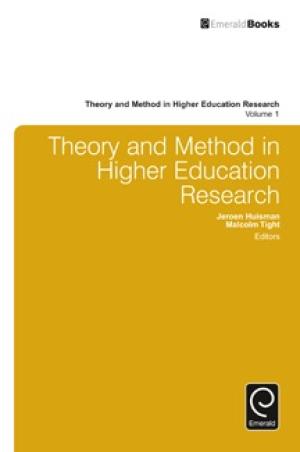
The first volume of Theory and Method in Higher Education Research, editedby Jeroen Huisman and Malcolm Tight, is an important contribution to the body of pedagogical literature. The volume focuses on researchers’ engagement with theory and contemporary utilization of methods in educational research. Generally, the book highlights contemporary theories and offers summaries pertaining to innovative methods in educational research. This is the first volume of a series that will attend to theoretical perspectives and methodological approaches for researchers. With fifteen chapters from a diverse group of international scholars, the book is a potential handbook for researchers to strengthen their research designs, methods, and analyses. In the first chapter, Yuzhao Cai and Yohannes Mehari provide a review of how institutional theory has been studied and applied in higher education research. Andrew Gunn, in the second chapter, argues that political factors, theories, and concepts from the field of political science can be applied to higher education policy analysis and matters related to the association between universities and the state. Next, Murray Saunders, Christina Sin, and Steven Dempster utilize a case study from Scottish higher education to describe the use of evaluation theory in policy research and methodologies. In a subsequent chapter, T. Austin Lacy describes a useful analytical tool for longitudinal studies, namely event history analysis, and offers a practical application for higher education. In the following chapter, Matthias Klumpp discusses the theoretical perspectives that can help stakeholders understand and measure performance and efficiency in higher education. In the sixth chapter, Mareike Landmann, Emilia Kmiotek-Meier, Daniel Lachmann and Jennifer Lorenz discuss reliability and validity in competence scales in graduate surveys. Brett Bligh and Michelle Flood’s contribution to the book is an illustration of the application of Change Laboratory theory to higher education research methodology. In the next chapter, Lynn Clouder and Virgina King present a case for further engagement with Appreciative Inquiry in higher education research. Erika Lofstrom, Anne Nevgi, Elisabeth Wegner, and Mari Karm offer a valuable explanation of how images may be utilized in research methods in the following chapter. Neville Clement, Terence Lovat, Allyson Holbrook, Margaret Kiley, Sid Bourke, Brian Patridge, Sue Starfield, Hedy Fairbairn, and Dennis M. McInerney wrote the next chapter that conceptualizes judgment, epistemic cognition and the quality of doctoral examinations. The following chapter, written by Megan Y.C.A. Kek and Sara Hammer, presents a meta-analysis centering on academic development research.The next chapters describe the application of important theories to higher education: Two-Dimensional Participatory Theory (Andrew Morrison) and capability approach (Ana Sofia Ribeiro). The final two chapters focus on qualitative approaches in higher education. Peter Gibbings, John Lidstone, and Christine Bruce offer a discussion about presenting phenomenographic research to technology-based audiences and Antonio Magalhaes and Amelia Veiga describe the utilization of the narrative approach in higher education research. Theory and Method in Higher Education Research: Volume 1 is a must have for anyone with an interest in contemporary theoretical perspectives, epistemological advancement, and methodological approaches in higher education research.
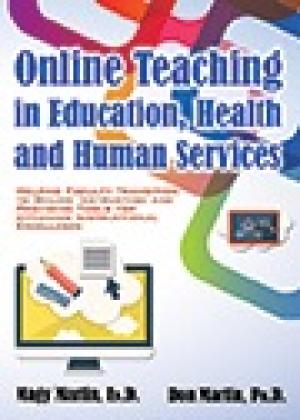
The challenge of teaching an online course brings a measure of trepidation into the heart and mind of even the most experienced classroom instructor. The authors provide a resource for the online instructor to understand who online students are, how they learn, and how to help them achieve their educational goals online (vi). While they accomplish this objective in some senses, the constant repetition of themes detracts from its overall contribution and makes it difficult to recommend. The opening chapter explains the pros and cons of traditional versus online learning, as well as differences and myths of online instruction. The second chapter covers critical issues in online education and then offers success strategies and best practices for instructors. A short explanation of synchronous, asynchronous, and hybrid models and the pros and cons of each strategy, including the type of content best taught by each method, forms the third chapter. At this point, the reader is prepared to start delving into actual practices for online teaching but instead the authors repeat the content of the previous three chapters. Arguably they offer additional perspectives about online teaching and learning in the ensuing chapters, yet the material is so repetitious, one cannot remember the new focus because the text reads like a perpetual review of content. This practice continues for the next five chapters. The one exception is found in chapter 7 where the authors are more focused on specifics necessary for instructors to successfully begin a course with students – including examples of pre-course and early communication (130-131). Chapter 9 continues the specific and valuable contribution chapter 7 begins by looking at specific activities and skills online instructors need for developing critical thinking skills in students, including teamwork practices, and how to assess such learning. The final chapter identifies various strategies that help instructors to manage time well when engaging the demands of teaching online courses. Though partially redundant, the addition of specific tactics and illustrations make the book a helpful contribution. Overall, some helpful principles emerge clearly from the book to help a novice online instructor plan and prepare for a course. The samples provided are beneficial, though an experienced instructor may have been able to develop these on their own from the principles discussed. Unfortunately, in a few instances an example was given that was contrary to the summative advice given. For example, one of the communication tips, to avoid the use of all caps (135), was followed by sample messages to students that included all caps. While appreciating some concepts presented in this volume, this reader will continue to look for a better-organized and more step-by-step book for assisting online instructors.
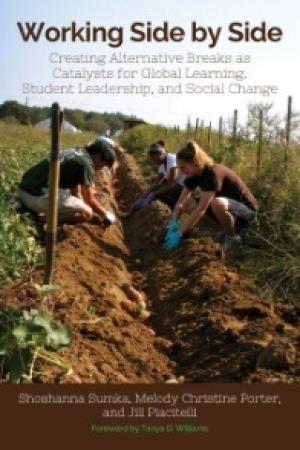
Sumka, Porter, and Piacitelli offer both the history and strategy of an emerging educational model that crosses borders between disciplines to develop competencies and leadership characteristics for social change. The authors document “short-term, student-run immersion service trips” designed to sharpen critical thinking and deepen commitment to future action for social justice (8). In this study their primary example of the alternative break movement is an organization called Break Away that grew out of Vanderbilt University. This and other new programs like the Alternative Break Citizenship school (ABCs) are rooted in efforts from the 1960s that experimented in transformational learning experiences combining travel, intercultural dialogue, collective action, and critical theorizing. A common denominator of these programs is the goal of social justice education. One theoretical framework undergirding these programs is an “active citizen continuum” pointing the way toward authentic relationships for life-long reflection, action, and community enrichment (10). The integration of critical theory and practice moves participants beyond charity and critical theorizing to active citizenship and intercultural competence. A key component of these programs is student leadership. By practicing the actual implementation of the model from the planning and training stages, students gain confidence and facility with each step of the work. In addition to providing the history and theory behind the programs, this book offers practical details contributing to the success of the learning. Readers find pointers on working relationships between staff and students as organizers and leaders of the trips, the alcohol and drug free policy, clarification of the roles of staff versus student leaders, as well as ideas about training, assessing, and fund-raising. The study would be strengthened by further development of the concept of justice. Despite the significance of social justice to this work, little attention is given to making explicit what is meant by justice. Similarly, the concept of global learning could be explored in relationship to literature on intercultural dialogue, collective action, and transcending political borders. Although this book provides an introductory discussion of what community means, contrasting communities of affinity versus communities of geography, the extensive body of work in philosophical and critical theory developing that distinction is not acknowledged (351). In other words, the academic and intellectual strands contributing to this model are not noted with as much care as the recent history of the particular program. This is a compelling read for anyone interested in learning that fosters authentic relationships rooted in “values of social justice, dignity, empowerment, and capacity building” (33). Although religious and theological frameworks are not discussed directly, schools or educators who offer immersion or intercultural learning experiences will benefit from reading this research. The authors’ caution about the tendency to slip toward do-gooder tourism, poverty tourism, and forms of educational travel where privileged students unwittingly perpetuate legacies of colonialism is timely and relevant.The conclusion of this book includes observations about the “need for inspiration and collective action” (359). If faith communities hope to be known as sources of inspiration and collective action in the future, this book offers potential for fertile common ground.
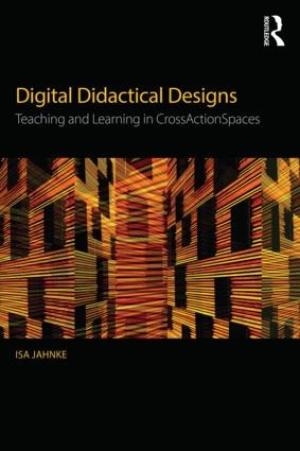
Digital Didactical Design is neither a step-by-step guide for developing educational curriculum, nor a compendium of creative teaching methodologies tweaked by the latest digital technologies. It is, however, a thought-provoking treatise aimed at educational institutions, teachers, and decision-makers in need of a better understanding of learning in a digital world. Readers are reminded that “instead of focusing too much on new technology-driven designs or content design” (13) attention should be placed on developing Digital Didactical Design that facilitates meaningful and deep learning. Equipped with research gathered in varied cultural and educational settings, Jahnke challenges educators to develop teaching methods that appeal to a variety of learning preferences that fall “outside-the-lines.” The author claims that many educational institutions remain fixated on a hierarchical, trickle down, teacher-student relationship that does not take into full consideration the varieties of learners in any classroom context. She also believes there has been an over reliance on the written text as a means of disseminating information. To facilitate greater surface and deep learning, Jahnke calls for a transformation of the language and mindset shaping didactical design and teaching at all levels – from early primary to tertiary. The book proposes certain key concepts as departure points for shaping a pro-active educational design that merges digital media and learning into new communication spaces called “CrossActionSpaces.” These space are seen as “dynamic, overlayered, expanded… where the boundaries of physical buildings and walls are somewhat irrelevant” (18). Learning communities, Jahnke believes, exist as much in cyber space as within the classroom, taking place across several boundaries to thousands of humans who are online, in different settings. In such a milieu, human communication becomes a catalyst for shrinking the distance between people, culture, and knowledge, and acts as a new form of social action (73). Another key concept put forward by Jahnke is the idea of “learning expeditions rather than that of learning experiences which are seen as more open ended” (99). In such an environment, formal structures and processes for teaching and learning combine to create communities where students and teacher are co-collaborators and sojourners of learning content. Additionally, readers are asked to consider learning as a social process constructed within an inclusive offline and online community. Instead of arranging learning around lectures and workshops, Jahnke contends that learning should be more open ended, student centric, and should emphasize social action and active learning, rather than information consumption (186). Digital Didactical Design is a reminder that the traditional teaching space is no longer the central metaphor (197). In its place has come a greater need for peer reflective learning, group activities, and collaborative unbounded reflection.This book affirms that in a digital world interactive technology and didactical design are to be wedded and used in proactive and progressive ways so as to advance student learning. Since new forms of learning are evolving, Jahnke has effectively placed her energies on helping readers better understand digital didactical design, rather than on supplying packaged solutions in all situations. She makes no claim to have all the answers, but she does provide countless opportunities for reflecting on the best way forward in shaping effective digital didactical design and learning strategies for today’s hyper-connected world.
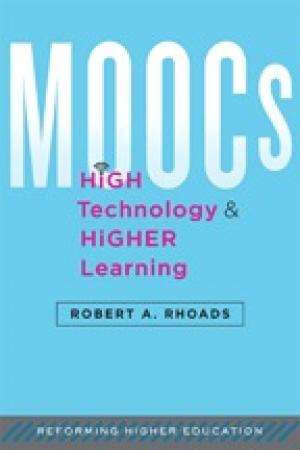
Stephen Downes, cofounder of the first Massively Open Online Course, or MOOC, once asked how many ways society actually needs to teach trigonometry (2001). Each instructor who teaches the subject must teach it anew every time. But what if there is an optimal way to teach the subject? Shouldn’t that be developed as a pedagogical artifact and made available to everyone? The MOOC promises the possibility that anyone with an internet connection can access quality instruction. Rhoads’ book, MOOCs: High Technology and Higher Learning is a critical examination of the MOOC movement. The first half of the book outlines the history of MOOCs as growing out of the Open Educational Resource movement, as well as the institutions which stepped in to take advantage of MOOCs to expand educational brands and even make open courses profitable. It also outlines the split between the Connectivist-MOOC (cMOOC), which relies on individual motivation for self-study, and the xMOOC, which represents the scalable online arm of institutions of higher education and which often offers certificates of completion. The book really shines in its critique of the current state of the MOOC movement. Rhoads argues that rather than being a democratizing force delivering free education to all, MOOCs have largely replicated inequalities in society. The MOOC movement has the ideals of democratization of education, but it has been dominated by a hegemony of elite schools such as “Columbia, Harvard, MIT, Penn, Yale, and Stanford” (104). He illustrates this problem using the example of a popular political philosophy course called “Justice” offered by Harvard’s Michael Sandel. When San Jose State University proposed offering a MOOC version of this course with Sandel delivering his lectures via video, the SJSU Philosophy Department objected. Their concern was that this created a two-tiered system in which students at elite universities interact with “rock star” (105) instructors, while students at public institutions watch canned lectures and whose work was supervised by faculty who were reduced to “glorified teaching assistants” (106). The scalability of MOOCs means that faculty may never interact with students, or at best may just serve as graders. Uncritical adoption of MOOCs also exacerbates problems of diversity in higher education, especially when one recognizes that the institutions creating MOOCs are less diverse than the presumptive adopting institutions. And finally, there is a false epistemological assumption that there is one right, best way to teach a subject, rather than allowing that there may be many different ways to teach a subject, each responsive to a particular social and cultural context. Rhoads’ goal is not to suggest that higher education should abandon MOOCs entirely. He is aware of the potential in MOOCs for making quality education more broadly available. But he recommends a number of reforms in the way MOOCs are developed and implemented. Digital online learning may benefit from a combination of recorded lectures and publicly accessible online documents as well as intensive faculty support embedded within particular institutional contexts. This approach to MOOCs yields a hybrid model he dubs an “xsMOOC,” a “MOOC with extra support” (130). Contrary to the view that online learning should be pedagogically efficient, Rhoads argues that the best educational resource is one that is grounded in the context of the learners who will use it. In this way can MOOCs best fulfill their promise.
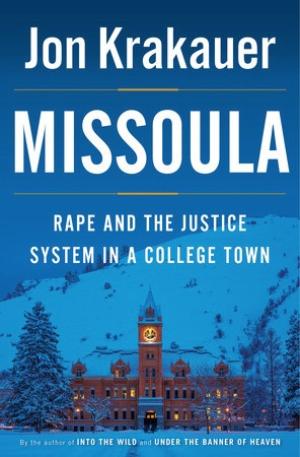
Jon Krakauer’s book on the epidemic of sexual assaults on American college campuses is hard to put down, both because it is incredibly well-written and engaging, but also because it is so alarming. For the faculty member who is already aware of the problem (either from a statistical vantage point or from hearing the experiences of survivors on her or his own campus), some of the information presented is not surprising. The scope of the issue is quite shocking, however: Missoula, home of the University of Montana, is the focus of Krakauer’s case study and one gets the sense that this college town is especially unsafe. Towards the end of the book, however, Krakauer demonstrate that Missoula’s rape statistics are actually typical – perhaps even lower than the national average. Even though the problem presented is horrifying, Missoula is not even the worse case scenario. Through interviews and legal testimony, Krakauer narrates the stories of several college-aged women who were sexually assaulted while they were students. Most of the accused rapists were members of the football team, so part of the story concerns the untouchable status of campus athletic teams (or, at least, certain high-profile athletic teams). But sports are not the only unjust system implicated here: Krakauer looks unflinchingly at the ways that administrators protect colleges from litigation, often at the expense of victims. He similarly criticizes the legal system for re-traumatizing victims and for consistently doubting women’s testimony when they come forward. Krakauer’s accessible explanations of technical matters are very helpful: for example, he explains the different burdens of proof that apply on- and off-campus. A college or university is required by the U.S. Department of Education to use a “preponderance of evidence” standard as its burden of proof when adjudicating sexual assault accusations, while the criminal justice system uses the “beyond a reasonable doubt” standard (179). Thus, a rapist may be found guilty in an on-campus case and expelled, even while the same evidence might not have resulted in a guilty verdict or prison time in the state’s criminal justice system. As another example, Krakauer uses psychiatrist Judith Herman’s foundational work to explain that traumatized people often act in bewildering ways that do not make sense to the outside world (perhaps by contacting the perpetrator or by continuing to attend class after experiencing violent trauma; moreover, the memories of a traumatic experience can be confusing and non-linear). Although these behaviors seem to indicate to others that “nothing happened” or “the experience must not have been that bad,” Krakauer (via Herman) shows that these are utterly typical behaviors of a traumatized person. Trauma so reorients a person that the behaviors a person displays in the aftermath can be counterintuitive to what non-traumatized people expect. This book should be required reading for faculty and especially for administrators who adjudicate sexual assault cases on college campuses; it would probably be useful for those in law enforcement, too. Missoula would also be excellent for campuses that have required first-year or campus-wide reading programs, as it forces us to consider the realities that victims face on campus and to realize that judicial systems, both on- and off-campus, can and must do better.
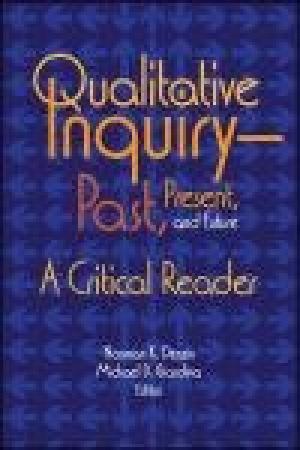
Norman Denzin and Michael Giardina have edited an amazing collection of cutting-edge articles on qualitative research methodologies and methods in their new volume, Qualitative Inquiry Past, Present, and Future: A Critical Reader. The editors selected twenty-four chapters for this volume from nine years of the Congress of Qualitative Inquiry proceedings.The authors represent a variety of disciplines including sport studies, education, psychology, sociology, communications, and gender studies. In the opening chapter, Denzin and Giardina provide an overview of the developments and arguments in qualitative research methodologies since the Congress published its first volume in 2005. They argue that qualitative research is “at a pivotal crossroads: We live in a historical present that cries out for emancipatory visions, for visions that inspire transformative inquiries, and for inquiries that can provide a moral authority to move people to struggle and resist oppression” (12). They explore the paradigm wars since the 1980s and create the space for this volume in the works of C. Wright Mills, Paulo Freire, bell hooks, and Cornel West. After this introduction, the book is divided into four sections, a coda, and an epilogue. Section I contains four chapters that explore the Philosophy of Inquiry. These chapters engage important concepts including disciplines sharing language using Bakhtin’s concept of chronotopes, the turn towards praxis, the role of institutional review boards, power, research ethics, as well as subjects and agency. The six chapters in Section II (Politics of Evidence / Politics of Research) explore the struggle between qualitative research and the privileged position of scientifically based research.The authors then highlight a variety of factors that threaten the legitimacy of qualitative research including pressures from pro-profit universities, the diminished role of faculty in university governance, and the rise of the national security state. Henry Giroux writes that “these may be dark times… but they don’t have to be, and that raises questions about what educators are going to do within the current historical climate to make sure that they do not succumb…. Resistance is no longer an option, it is a necessity” (216). Section III, Methodological Imperatives, contains some of the most provocative and practical articles for active researchers. These articles engage an array of methodological techniques including empathetic interviewing, ethnography, performative writing, art-based methods, and autobiographical methods. Halley’s article on the production of death and Dillard’s work on memory and spirituality in particular push the frontier of methodological discussions. Section IV, Indigenous and Decolonizing Interviews, provides four articles that advance the role of social justice in the research agenda. These authors engage multiple levels of struggle and as Puebla argues, “our knowledge about the social world has been tremendously useless when dealing with the urgency of social justice, social change, and democracy” (387). In the Coda, Ellingson stresses the passion and pleasure of paying attention. The Epilogue contains an engaging dialogue on the future of qualitative inquiry. The dialogue itself was the result of e-mail exchanges between the two editors and five additional authors. Denzin and Guardina conclude: “qualitative inquiry is being pulled in multiple directions at once: pushing the boundaries of both traditional social science and interpretive research; engaging in struggle against oppressive institutional and political machinations, balancing the need for deep theoretical engagement with a praxical approach to the research act; and striving to engage with (if not change) the landscape on which qualitative inquiry currently sits… we have a job to do; let’s get to it” (462). This is a powerful and inspirational volume. It is global in scope with articles from the United States, Europe, Africa, and New Zealand. The individual articles contain excellent bibliographies and insightful conclusions. They are well written and easily accessible to graduate readers. This volume is an important addition for theological libraries that serve schools with degrees in practical theology, emphasis in social justice, chaplaincy programs, and doctor of ministry degrees. Professors who teach theological methodological approaches and methods should consider adding selected articles from this volume to their required reading.
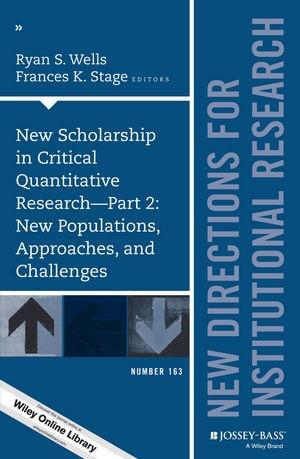
The New Scholarship in Critical Quantitative Research – Part Two: New Populations, Approaches, and Challenges provides readers with a timely and much needed expansion of the emerging paradigmatic approach of blending critical theories with quantitative methods. This volume substantially supplements the two prior New Direction for Institutional Research volumes that serve as the only other major publications on the employment of critical quantitative inquiry within higher education. Editors Wells and Stage garnered a multifarious group of authors to present diverse perspectives and methodological nuances within critical quantitative inquiry. The authors examine underserved and minoritized subpopulations of students, under-researched institutional types, and paradigmatic conflict within methodological techniques. The way Wells and Stage combine these chapters allows readers to preview the utility of employing critical quantitative inquiry by considering areas that are missing within the existing literature (minoritized student populations and community colleges). In Chapter One, Faircloth, Alcantar, and Stage provide a blueprint for researchers to examine the experiences of American Indian and Alaska Native students who frequently are represented on national surveys in very small sample sizes. These authors not only provided tangible ways to use large-scale datasets to study minoritized groups, but also illustrated multiple ways to conceptualize how researchers operationalize identity variables as quantitative data. Chapter Two examines another minoritized group, students with disabilities. In this chapter, Vaccaro, Kimball, Wells, and Ostiguy propose the idea of critically analyzing samples of students with disabilities to develop “policies and practices that liberate rather than exclude” (38). Chapter Three examines an under-researched institution type, the community college. Rios-Aguilar beautifully delivers a set of tangible possibilities for community college leaders and institutional researchers to collect, analyze, and utilize “big” data for commuter students at two-year institutions. In Chapter Four, Malcom-Piqueux details a study using latent class analysis to discover inequities in college financial aid. Canché and Rios-Aguilar again use the context of the community college, in Chapter Five, to highlight social network analysis. Through a completed research project, they outline basic concepts of critical social network analysis and implications for institutional researchers at community colleges. Hernández, in Chapter Six, diverges from empirical examples to examine the theoretical and paradigmatic tensions of critical quantitative inquiry. Finally, Wells and Stage provide Chapter Seven as an overview of the historical uses of critical quantitative inquiry and implications for the future. This publication is well-organized and provides readers with a variety of perspectives and empirical examples. While there are several overlaps between the chapters, particularly as it relates to the implications (for example, need to oversample minoritized populations), this overlap in each chapter still diverges slightly from the other chapters. This publication is a bold counter-argument to using strictly positivist and postpositivist methods, which will allow researchers to highlight inequities and better study the experiences of minoritized students in higher education. This publication is worth purchasing if you research or assess the needs, experiences, and outcomes associated with the collegiate experience.
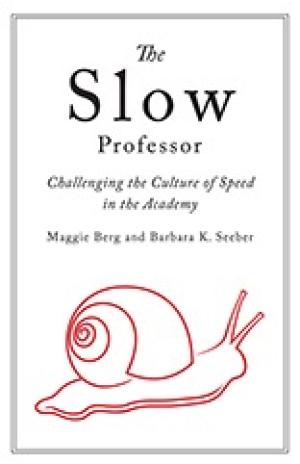
The Slow Professor takes its cue from the slow food movement (http://www.slowfoodusa.org). Borrowing the words of Carlo Petrini, author of Slow Food Nation, Maggie Berg and Barbara K. Seeber define slowness as “not so much a question of duration as of an ability to distinguish and evaluate, with the propensity to cultivate pleasure, knowledge, and quality” (89-90). Slowness, in their thinking, is less about speed than it is about intentionality. They raise this point in a number of contexts. On the slim volume’s opening page, Berg and Seeber identify the popular and academic discourses they engage in their exploration of time management and timelessness; pedagogy and pleasure; research and understanding; and collegiality and community. They intersperse expert opinions from a variety of fields, including other research on teaching and learning, to support their stance that slowness is a productive stance for academics. Each chapter builds a case for slowness that culminates in practical suggestions, many of which seem like the kind of advice a reader with this book in hand may have considered already. I found value, however, in Berg, Seeber, and their chorus of sources confirming my suspicion that in the face of pressure to work constantly, I have a right to health, a life with my family, and enjoyable hobbies (16). Still, their advice tends to focus on what individual readers can do on a daily basis rather than on how institutional change might occur. For example, the first chapter, “Time Management and Timeliness,” ends with elaborations on these recommendations: “We need to get off line;” “We need to do less;” “We need regular sessions of timeless time;” “We need time to do nothing;” and “We need to change the way we talk about time all the time” (29-32). I am all for these, and I wholeheartedly agree that “if you want an event to be joyless, make it mandatory,” a takeaway from the end of “Collegiality and Community” (83). Still, the pressure of knowing that I have five years to publish another book, mere months to submit my next article, or a few weeks to finish a book review (ahem) gives me pause when I weigh walking the dog against writing. Institutional pressures directly affect individuals, but change in an individual’s perspective on time – especially that of a junior or contingent faculty member, for instance – does not lead directly to institutional change. Berg and Seeber acknowledge that “academic culture celebrates overwork” but, they argue, “it is imperative that we question the value of busyness” (21). Herein lies their contribution: in questioning busyness, they advocate learning from slowness so that the work we do is planned, thoughtful, deliberate, and energizing rather than scattered, scatter-brained, hurried, and draining. The latter leads to diminishing returns hidden behind the familiar, “I’d love to, but I’m busy.” The former can yield Csikszentmihalyian flow in reading, writing, and teaching.
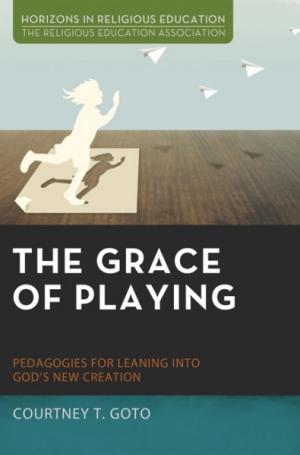
In The Grace of Playing, Courtney Goto offers a project in practical theology for Christian religious education that uses the notion of playing to better understand teaching and learning. Goto distinguishes her project from a formal practical theology of play, where play could be explored as a universal category of human existence. Instead, she works in the line of Paulo Freire’s search to move beyond a traditional schooling model of education towards learning that is more integrated, experiential, and creative. Specifically, Goto reflects critically on the notion of revelatory experiencing through the language and pedagogies of playing. Her focus is on playing as it relates to adult learning, and her investigation demonstrates – both conceptually and through case studies – how playing cultivates faith formation. Goto is an Assistant Professor of Religious Education at the Boston University School of Theology and a co-Director of the Center for Practical Theology. She writes as a third generation Japanese American United Methodist primarily for an audience of theorists, students, and practitioners who are liberal mainline Protestants. She invites Roman Catholic, Orthodox, and Charismatic Christians into the conversation as well, but notes that her advocacy of revelatory experiencing is to be understood in terms of the contextualized perspectives encountered in mainline Protestant churches. This is an important caveat. Theologically conservative readers will take issue with her concept of revelatory experiencing, whereby revelation happens in between persons as they relate to one another (as opposed to approaching Christian revelation as a totalizing meta-narrative). That Goto makes her theological liberalism so clear and defined, particularly in terms of her understanding of revelation, is a great service to readers. The Grace of Playing investigates playing from social scientific, theological, and historical perspectives and offers two case studies for application. After a preface and introduction, Chapter 2 explores psychoanalytical and psychological concepts of playing, relying particularly on D. W. Winnicott to articulate sociologically what occurs in revelatory experiencing. In Chapter 3, Goto turns to theology to build a theory and constructive proposal of play by appropriating insights from Jürgen Moltmann’s Theology of Play. Chapter 4 is a historical accounting of medieval practices of play, including the use of devotional dolls by fourteenth century nuns in the Rheinland, Germany and the practice of holy foolery by those in both Western and Eastern Church traditions. The final two chapters contain case studies of grace-filled play. The first describes the creation of a pretend garden at a Japanese American church for the purpose of congregational reconciliation, and the second briefly recounts a practice of playing with inmates in a juvenile detention center.To conclude, Goto demonstrates that the grace of playing leads a world in need towards God’s new creation. The Grace of Playing skillfully navigates insights from sociology, theology, and history to make a compelling case for the theological practice of play as a mediating, revelatory experience within Christian religious education. The book is readily accessible for students and practitioners, without neglecting the more technical needs of theorists. For the case studies, Goto deliberately refrains from providing much, if any, direct data; this effectively condenses the reading, but also leaves a sense of wanting to know more about how the grace of playing works itself into and through these unique settings. Overall, the book is a warm invitation for all to play in the fullness of God’s grace.
Wabash Center Staff Contact
Sarah Farmer, Ph.D
Associate Director
Wabash Center
farmers@wabash.edu